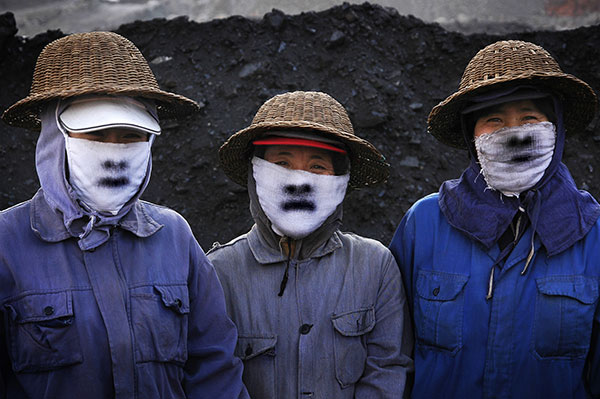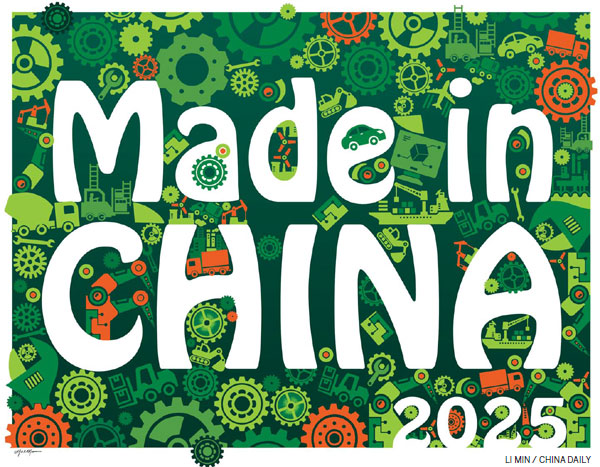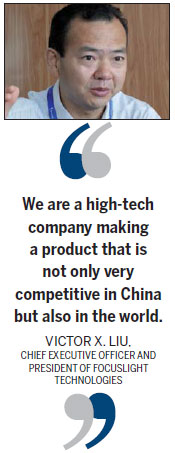Stepping up
Updated: 2015-09-11 07:27
By Andrew Moody(China Daily Europe)
|
|||||||||||
China has a new mission: Upgrade manufacturing processes to become leader in innovation
Victor X. Liu could be the new face of China's manufacturing.
The 42-year-old, who has a doctorate in power electronics from Virginia Tech in Blacksburg, Virginia, is far removed from the entrepreneurs who used to turn out plastic toys and other inexpensive products on China's southern and eastern coasts as the country became the workshop of the world.
He is chief executive officer and president of Focuslight Technologies, which is based in the Xi'an High-tech Industries Development Zone in northwestern China.
The company, which makes semiconductor lasers that have applications in 3D printing as well as medical uses in skin rejuvenation and in dentistry, could be a model for the Chinese government's Made in China 2025 strategy launched in May.
The government wants to focus on 10 key sectors, including robotics, information technology, aerospace, maritime equipment and high-tech shipping, high-speed rail and new energy vehicles.
"This is the new economy and about upgrading the manufacturing process. We are a high-tech company making a product that is not only very competitive in China but also in the world," he says.
Made in China 2025 is, in fact, the first 10-year phase of a 30-year program to upgrade China's manufacturing sector. The aim by 2045 is for the country to become a leader in innovation.
China is not the only country to launch such plans. The United States came up with its National Network for Manufacturing strategy in 2013 to build 45 innovation centers to serve as regional manufacturing development hubs.
In Europe, Germany has unveiled its Industry 4.0 plan aiming to build high-end smart factories, the United Kingdom has launched its British Manufacturing 2050 strategy and France its New Industrial France plan focusing on key industries such as new energy and digitalization.
That China should have a renewed focus on manufacturing may seem at odds with the government's aim to rebalance the economy toward being more services-led.
Chinese Premier Li Keqiang said in 2013 he saw developing services as a "strategic measure" to upgrade the economy.
Cai Hongbin, dean of the Guanghua School of Management at Peking University and also a member of the National People's Congress, China's legislature, insists the 2025 plan is a timely restatement of the value of manufacturing to the Chinese economy.
"People say that services is good and manufacturing is bad but I completely disagree with this. I think if the manufacturing sector becomes stronger then the services sector will grow from that.
"I think the plan is a really good policy target to signal the importance of manufacturing. I think that until now there hasn't been enough attention paid to manufacturing."
One of the reasons manufacturing has been downplayed is that with labor costs rising dramatically over the last decade, China has been unable to remain a low-cost producer.
Those reliant on cheap labor have been forced to shift their production to countries such as Vietnam, Cambodia, Bangladesh and even African countries.
Liu at Focuslight says China can no longer engage in this so-called race to the bottom.
Unlike China's earlier pioneering manufacturers, his company is not dependent on cheap labor.
Labor, in fact, only makes, up 15 percent of the company's direct product cost (when research and developments costs are excluded), compared with 60 to 65 percent for low-cost manufacturing.
Of his 300 employees, around 130 have master's or doctorate degrees.
Today's Top News
US to accept 10,000 Syrian refugees
China, Arab States to explore cooperation
Greek conservative to seek pact with leftists first if he wins election
Russian military experts present in Syria
Britain calls for talks to calm Northern Ireland crisis
Hungarian TV journalist fired for tripping up fleeing migrants
Inside look at new products launched by Apple
Economy will not see a hard landing: Premier Li
Hot Topics
Lunar probe , China growth forecasts, Emission rules get tougher, China seen through 'colored lens', International board,
Editor's Picks

|

|

|

|

|

|








